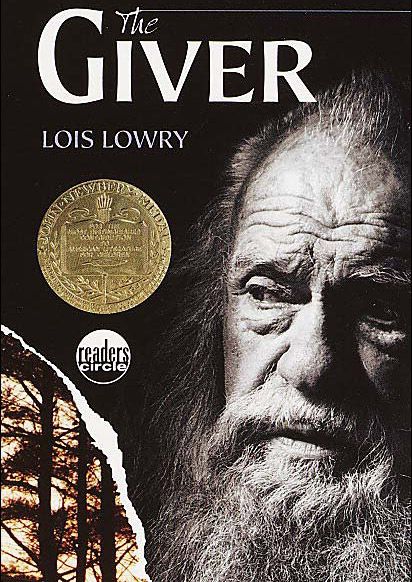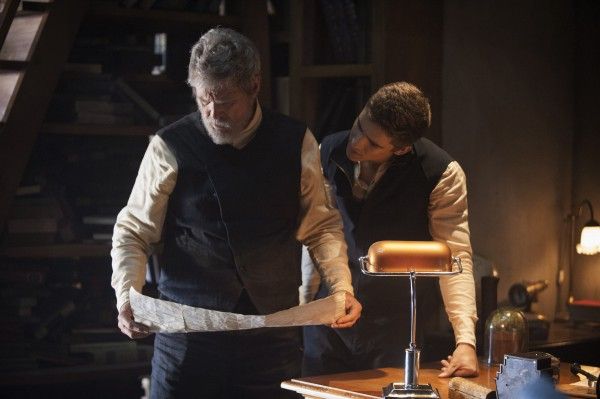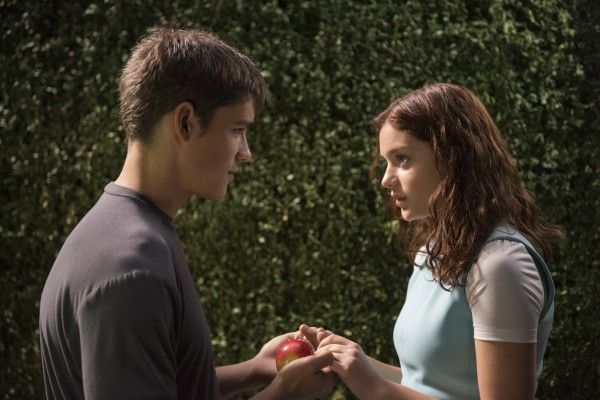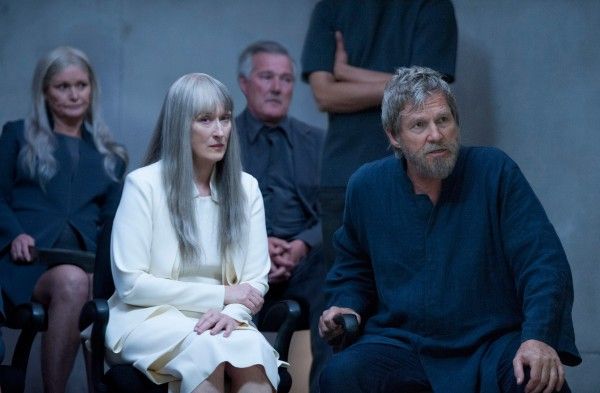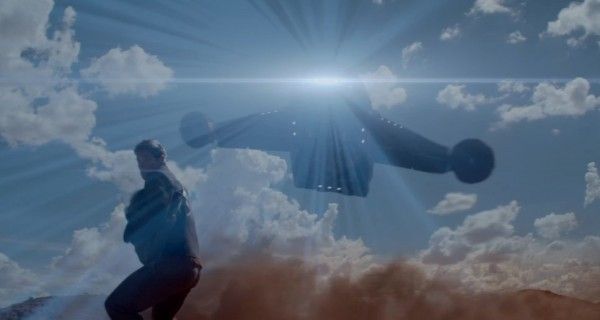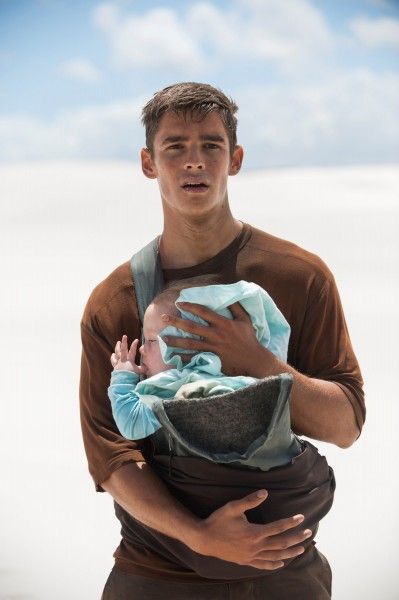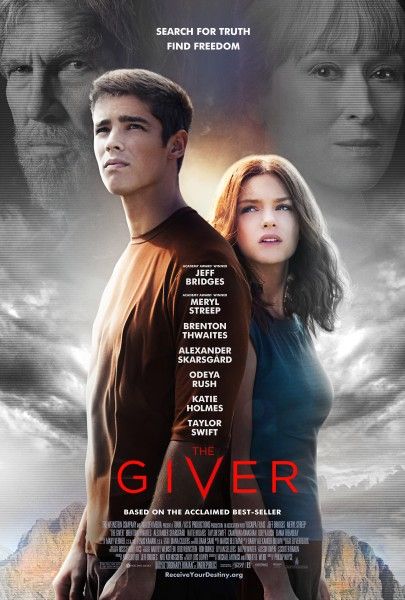I’ve covered a lot of young adult book-to-film adaptations over the years, and I’ve always made a point of assessing the film as a standalone entity when writing a formal review - but this is not a formal review. Initially, this piece was intended to be a rather straightforward book/film comparison, but considering Phillip Noyce’s The Giver bears almost no resemblance to Lois Lowry’s award-winning and beloved source material and suffers severely for it, all there is to discuss are differences and the problems they cause.
Hit the jump to read about what the film version of The Giver did different – or rather, did wrong. [This article contains spoilers for both the book and the movie.]
There’s No World Building
In the book, we get almost nine full chapters of material before Jonas (Brenton Thwaites) is selected to be the new Receiver of Memory. In the movie, it’s mere minutes.
A personal favorite quality of Lowry’s book is the fact that it makes you wonder, "What would life be like without color? What if I didn’t have the words to describe how I’m feeling? What if war didn’t exist?" However, that reaction just isn’t possible for Noyce’s film because we’re never given the chance to get acclimated to this strikingly different way of life. Rather than introduce us to Jonas as a person first and then let him guide us through the day-to-day happenings in the community, Michael Mitnick and Robert B. Weide’s script lays it all out there via exposition to get it out of the way and then moves forward.
Sure, we hear things like going out after a certain hour and imprecise language are not allowed, but that’s not the same as feeling the pressure to abide by those rules. In the book, it’s stressed that pointing out someone’s differences is considered rude, bragging is a big no-no, and taking an apple home from school isn’t allowed either. And when someone commits one of those transgressions, they have to pay for it. With the apple for example, Jonas wasn’t outright scolded, but he was deeply ashamed when he heard the community-wide announcement, “Snacks are to be eaten, not hoarded.” It’s not about what the punishment is, but rather how it makes Jonas feel and that’s something we never experience in the film, primarily because it never lets us breathe, digest and understand our new surroundings.
Jonas and Co. Are Older
In the book, the final ceremony is the Ceremony of the Twelve. That’s when a child is assigned his or her lifelong job, at 12-years-old. In the movie, however, Jonas, Fiona and Asher (Cameron Monaghan) announce that they’ve just graduated so now it’s time for them to get their assignments, suggesting that they’re more likely about 17-years-old.
This happens and sometimes, there’s just no way around it. There are great 12-year-old actors out there, but it isn’t easy to find one let alone schedule a feature film shoot around age restrictions. But the problem with making the kids so much older is that it makes it much harder to come to understand why they don’t question their way of life sooner. Sure, they don’t have memories of human history, but as you grow and mature, isn’t it only natural to start putting two and two together and start making sense of certain things? Their special injections can’t abolish all sense of awareness, or otherwise we’d have a community full of zombies.
In fact, that’s kind of what the characters feel like: something more akin to a zombie or a robot than a living, breathing, feeling human being. It’s just not cinematic to have a film with main players who can’t feel. And this isn’t really an example of the film staying true to the book, but rather an example of the film taking an element of it way too far.
There’s Romance
Jonas did have an eye for Fiona in the book, but in the movie, it’s taken to typical young adult romance levels. Had the filmmakers actually taken the time to give viewers a comprehensive sense of how the “marriage” process works in the community and how wrong it was to have “Stirrings,” this could have made for a really interesting addition to the narrative. They do almost get there when they have Jonas ask The Giver (Jeff Bridges) about having a wife when you’re the Receiver of Memory, but like most elements of the film, it isn’t given enough time for you to digest and consider.
Instead, what we get are a bunch of those all-too-familiar awkward attempts to tell someone you like them plus a downright ridiculous waterfall kiss scene. There’s nothing wrong with the kiss itself and Thwaites and Odeya Rush actually do have some chemistry, but that damn waterfall is just so distracting. Who would ever walk through it and then head off to work soaking wet like there’s absolutely nothing weird about it? And it’s not like they were actually hiding from the community surveillance in there anyway.
The Chief Elder is a Villain
One of the reasons The Giver is such a thoughtful read is because it moves forward without a defined antagonist. You could say the Chief Elders are the bad guys because they’re the ones enforcing Sameness, but really, what do they even know? The Giver is the one with all the memories. They’re just doing what they think is best for the community.
In the movie, however, Meryl Streep’s Chief Elder essentially behaves like Kate Winslet’s character in Divergent. She’s in charge so she’s going to keep things the way she wants them, even if she has to do terrible things in the process, and then she’ll use the structure of the society as an excuse. Streep’s character does wind up upping the suspense every now and then, but it’s at the expense of Jonas’ personal journey.
In the book, just like the movie, Jonas is compelled to up and leave his home when he hears about Gabriel’s impending euthanasia. But, in the book, rather than run to The Giver for last minute help and take part in a chase scene, Jonas just packs some food and leaves. He’s terrified, but the decision and what follows isn’t fueled by action, but by Jonas’ resolve and beliefs. That doesn’t come through in the movie. Instead, the focus is on the fact that the Chief Elder is after him and that she’s going to kill Fiona if he doesn’t get to Elsewhere fast enough.
The Movie is Sci-Fi to the Max
I don’t know about you, but when I read The Giver, I certainly didn’t picture a futuristic landscape with touch screens, holograms and space ship-like sliding doors. In fact, I always imagined the opposite – the utmost simplicity and only what’s necessary to live comfortably.
In Noyce’ movie, however, gone are the days of the pill that eradicates “Stirrings.” Now it’s an injection via a fancy apparatus built into your own home that not only strips you of those feelings, but many others as well. Asher’s also no longer the Assistant Director of Recreation. He’s a drone pilot in training, and probably only so the filmmakers could have a little added (and very forced) action in the third act. And then of course we’ve got the general design of the community. There’s high tech machinery everywhere, the graduates get their assignments on digital tablets rather than in folders and even the bicycles have a sleeker design.
Is all of this bad? Not necessarily, but it still begs the question, does the story need it, and the answer to that is a definitive no. In fact, the flashier gadgets and setting take away from the human qualities of the narrative and also make it distractingly obvious that The Giver is trying to bank on Divergent and The Hunger Games’ success.
Memory Loss Can Be Reversed
In Lowry’s book, they never really give a detailed account of why the community has no memories. The Giver has them all for the sake of Sameness and that’s just the way it is. The movie, however, does explain more about the community's loss of memory, and the problem with that is that it seems to have been done to serve the more unnecessary elements of the film—those pieces that make The Giver feel more like a Hunger Games, Divergent knock-off.
In the movie, the community is located on a plateau that goes all the way up into the clouds. The area surrounding it is desert-like and if someone crosses "The Edge," everyone gets the memories back. Why? Who knows? The only logical answer I can come up with is that it gives the tail end of film a ticking clock and Jonas a more defined thing to fight for. Perhaps the folks behind the film version thought that the book’s conclusion wasn’t satisfying enough. Yes, you are left wondering what will become of Jonas and the community at the end of the final chapter, but that in no way makes it an unfulfilling conclusion. Rather, it provides wonder and hope.
In the film, you know what happens to the community when Jonas leaves and you have a more thorough understanding of the rules of Sameness, and that takes away from the awe of the film’s final moment.
Conclusion
Again, I’ve been covering YA-to-film adaptations for a while now and have always made a point of assessing the film on its own when writing a formal review. This isn’t a formal review, but even if it were, I honestly don’t think I could make that kind of separation. When it comes to films like The Hunger Games and Divergent, it’s been easy to let go of certain elements of the book because the movie stands on its own. The Giver, on the other hand, has almost nothing to offer.
The moment it opens we’re hit with exposition overload, hollow characters and a number of very blatant efforts to be like those past YA successes. It’s nearly impossible to connect to the story and characters as they’re presented in the film and when that’s the case, there's nothing left for you to think about other than how the book did it better.


